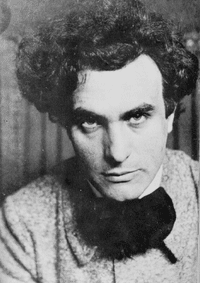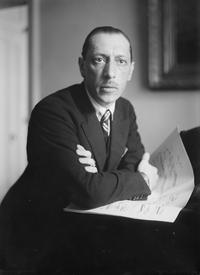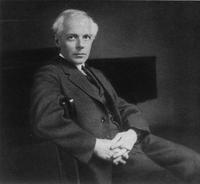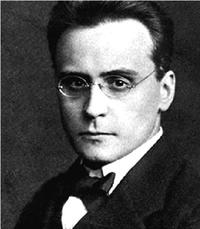2015年12月26日土曜日
Fluxフレームワーク
2015年12月23日水曜日
2015年12月22日火曜日
Selecting or highlighting node or mesh by butto... | Adobe Community
Selecting or highlighting node or mesh by button using javascript
LOD_PROJECTS 2013/07/19 8:32
Hi
I have 3D pdf model with node 1001 or mesh name 2002 and when I klick
it by mouse on 3D view it is highlighted and get orange boundary box.
I have created button name 1001 button and I would like to add to this
button javascript function which will highlight this node or mesh in
the same way as click on those.
I found in discusion some way of make it for example red by changing
rendering mode to illustration but it is not what I am trying to do. I
asking if it is possible just select from button using name of node or
mesh. if you have any exmaple of script i will be very pleased.
1555 閲覧
タグ: 3d
3d でタグ付けされたコンテンツ
, javascript
javascript でタグ付けされたコンテンツ
, button
button でタグ付けされたコンテンツ
, 3dpdf
3dpdf でタグ付けされたコンテンツ
, model_tree
model_tree でタグ付けされたコンテンツ
, 3d_pdf
3d_pdf でタグ付けされたコンテンツ
返信する
Translate
平均ユーザー評価: 評価なし (0 評価)
平均ユーザー評価
評価なし
(0 評価)
評価:
評価 劣っている(1 : 5)評価 平均以下(2 : 5)評価 平均(3 : 5)評価 平均以上(4 : 5)評価 優れている(5 : 5)
1. Re: Selecting or highlighting node or mesh by button using javascript
mrfale67 2013/07/19 11:58 (LOD_PROJECTS への返信)
See what I was answered here:
http://forums.adobe.com/thread/1224570?tstart=0
Otherwise, if you know the name, simply use getByName().
I think what you are looking for may be the wireframeColor property
but I have never experienced it directly. Should you find how to
replicate the selection orange boundary box, please share the solution
with us.
「いいね!」 0 件の「いいね!」を表示(0)
返信する
アクション
Translate
2. Re: Selecting or highlighting node or mesh by button using javascript
LOD_PROJECTS 2013/07/19 15:28 (mrfale67 への返信)
thanks for answer.
It is not what I want to do
I have 5 layer and on each layer I have one node and under neath one mesh.
I would like to select node or mesh by clicking button created on page
not by clicking in 3d model or Model Tree. Like below bottles are
selected (highlighted).
NowI doing it like that:
BUTTON 1-----------------------------------------------
myAnnotObj = getAnnots3D(0)[0].context3D;
myAnnotObj.scene.defaultRenderOptions.illustrationRenderModeFaceColor.set(
1, 0, 0 );
for (var i = 0; i < myAnnotObj.scene.meshes.count; ++i)
{
mesh = myAnnotObj.scene.meshes.getByIndex(i);
mesh.renderMode = "solid";
}
HighlObj = myAnnotObj.scene.meshes.getByName("1001");
HighlObj.renderMode = "illustration";
---------------------------------------------------------------
BUTTON 2-----------------------------------------------
myAnnotObj = getAnnots3D(0)[0].context3D;
myAnnotObj.scene.defaultRenderOptions.illustrationRenderModeFaceColor.set(
1, 0, 0 );
for (var i = 0; i < myAnnotObj.scene.meshes.count; ++i)
{
mesh = myAnnotObj.scene.meshes.getByIndex(i);
mesh.renderMode = "solid";
}
HighlObj = myAnnotObj.scene.meshes.getByName("2002");
HighlObj.renderMode = "illustration";
---------------------------------------------------------------
in this method I have to clean old selection in the loop doing this
render mode back to solid. In the same time my selection not working
at all in render mode illustration. So I would like to find how to
select like in picture from button in document. by script.
「いいね!」 0 件の「いいね!」を表示(0)
返信する
アクション
Translate
3. Re: Selecting or highlighting node or mesh by button using javascript
mrfale67 2013/07/20 0:53 (LOD_PROJECTS への返信)
I think you are doing well.
Things I would try:
1) "for (var i = 0; i < myAnnotObj.scene.meshes.count; ++i)": I have
never seen "++i" but "i++"; are you sure you are parsing all meshes?
just try a "console.println("Mesh name " + mesh.name)" within the loop
to check for this; this way, you will also be assured of your mesh
name;
2) the reset loop is fine but I would also try "renderMode =
'default'" instead of "solid";
3) mesh obj has also a "material" property: in particular check
against "diffuseColor, diffuseTexture, emissiveColor, emissiveTexture,
opacityTexture"; I have heard they should be considered when dealing
with rendering;
let us know your progress
「いいね!」 0 件の「いいね!」を表示(0)
返信する
アクション
Translate
4. Re: Selecting or highlighting node or mesh by button using javascript
Dave Merchant 2013/07/20 3:21 (mrfale67 への返信)
Why is everyone trying to change the visual appearance of the model?
LOD_PROJECTS wants to set the active selection, so just do that:
scene.selectedNode = scene.meshes.getByName(' something' );
「いいね!」 0 件の「いいね!」を表示(0)
返信する
アクション
Translate
5. Re: Selecting or highlighting node or mesh by button using javascript
LOD_PROJECTS 2013/07/20 8:09 (Dave Merchant への返信)
Hi Dave,
Thank you that is exactly what I want and it works. Awesome.
mrfale67
After dave tip I shorten script in button from those above to:
myAnnotObj = getAnnots3D(0)[0].context3D;
myAnnotObj.scene.selectedNode = myAnnotObj.scene.meshes.getByName("1001");
and more in next button I can change rendering to illustration and
selected object is still selected.
many thanks guys
「いいね!」 0 件の「いいね!」を表示(0)
返信する
アクション
Translate
2015年12月21日月曜日
分子構造を 3D で観察しよう (3):新しい見せ方 | Chem-Station (ケムステ)
jQuery DOM要素の生成
$("<a></a>", { href: "abc.html", target: "_blank", "class": "myClass" });
1.8からはjQueryメソッドを指定することができるらしい。これは便利!
$("<div></div>", { width: 100, height: 100, css: {border: "5px solid gray"}, addClass: "my-div", on: { click: function(event) { // イベント設定 } } });
参考:jQuery入門道場
ブラウザウィンドウをリサイズした際のコールバックを設定可能にするjQueryプラグイン「ResizeEnd」 | BlackFlag
Amazon Linuxの特徴とCentOSとの違い まとめ
2015年12月17日木曜日
CSS 上付き下付き文字(sup, sub)でline-heightが広がるのを防ぐ
react.js - React記事まとめ
2015年12月16日水曜日
2015年12月15日火曜日
GoogleアナリティクスのレポートをGoogleスプレッドシートで自動化
2015年12月12日土曜日
Fwd: jQuery input エンターキーが押された時に何かする
http://elearn.jp/jmemo/jquery/memo-250.html
$( '#addr' ).keypress( function ( e ) {
if ( e.which == 13 ) {
// ここに処理を記述
return false;
}
} );
jQuery input エンターキーが押された時に何かする
http://elearn.jp/jmemo/jquery/memo-250.html
2015年12月11日金曜日
2015年12月9日水曜日
XSERVER で git を使う [Tipsというかメモ]
http://tm.root-n.com/server:xserver:git_setup
WordPress と Facebook を効果的に連携させるための4つの方法
http://bazubu.com/how-to-connect-wp-to-fb-23544.html
2015年12月7日月曜日
2015年12月5日土曜日
2015年12月4日金曜日
iOS Safari スクロールバーカスタマイズ

.element{ /* 対象となる要素のクラス名が"element"の場合 */
overflow: auto;
}
.element::-webkit-scrollbar{ /* スクロールバー本体 */
width: 5px;
background: #9aadfc;
}
.element::-webkit-scrollbar:horizontal{ /* 横方向のスクロールバー本体 */
width: 5px;
background: #9aadfc;
}
.element::-webkit-scrollbar-thumb{ /* スクロールバーの動く部分 */
background: #435295;
border-radius: 2px;
}
.element::-webkit-scrollbar-thumb:horizontal{ /* 横方向のスクロールバーの動く部分 */
background: #435295;
border-radius: 2px;
}
.element::-webkit-scrollbar-track-piece:start{ /* スクロールバーの動く部分の前 */
background: #9aadfc;
}
.element::-webkit-scrollbar-track-piece:end{ /* スクロールバーの動く部分の後ろ */
background: #a3d2a0;
}
.element::-webkit-scrollbar-corner{ /* スクロールバー角 */
background: transparent;
}
2015年12月2日水曜日
Wikipedia DBPedia
2015年12月1日火曜日
iOS Safari タッチイベントの検出確認
http://vs.smartnet.expressweb.jp/wp-content/uploads/2013/09/bootstrap-iOS-event-test.html
iPhone(iOS7)でサイトを見ていたら左側からのスワイプでページ戻る操作になっていた
http://vs.smartnet.expressweb.jp/iphone-ios7-%E5%B7%A6%E5%81%B4%E3%81%8B%E3%82%89%E3%81%AE%E3%82%B9%E3%83%AF%E3%82%A4%E3%83%97%E3%81%A7%E3%83%9A%E3%83%BC%E3%82%B8%E6%88%BB%E3%82%8B%E6%93%8D%E4%BD%9C/#
◉ Sent from my iPhone
2015年11月30日月曜日
2015年11月29日日曜日
[JS][CSS3] jQuery を使わずに fadeIn / fadeOut のアニメーションを実装する方法
http://memocarilog.info/jquery/7228
2015年11月28日土曜日
【JavaScript】addEventListenerの無名関数をremoveEventListenerで消す方法 | Web活
2015年11月27日金曜日
ハイパーリンクのアドレスを取得するPowerPointマクロ
2015年11月26日木曜日
ChromeDevTool - Chrome Developer Toolsでパフォーマンス計測・改善 - Qiita
2015年11月24日火曜日
Sublime Text2 スペースとタブを表示する方法
[み]Sublime Text2で、スペースとかタブを見えるようにする方法
http://miha5.com/2012/09/2507/
【Sublime Text2】→【Preference】→【Setting – User】で開いた
「Preferences.sublime-settings」に次のコードをコピペします。
"draw_white_space": "all"
web帳 | スマートフォン JavaScript タッチ、フリックイベント実装
http://www.webcyou.com/?p=3121
jQueryを使ってスマートフォン用のイベントを扱ってみた
https://blog.sus-happy.net/201112/jquery-smart-phone/
iPhone/Android/PC 対応。jQuery で書くタッチイベント (フェンリル | デベロッパーズブログ)
http://blog.fenrir-inc.com/jp/2011/06/ios_android_pc_touchevent.html
2015年11月22日日曜日
[JS] タップイベントが実装されているのかを調べる方法(2つ) - YoheiM .NET
http://www.yoheim.net/blog.php?q=20140206
iPhone向けwebアプリを作ってみる-タッチイベント、ジェスチャーイベントに関するまとめ- : アシアルブログ
http://blog.asial.co.jp/524
「Excel」アドイン「正規表現検索」
http://www.forest.impress.co.jp/docs/news/20151120_731658.html?ref=googlenews&google_editors_picks=true
2015年11月20日金曜日
発生したイベントの状態を保持・保存する6つのパターン - jQuery
http://ponk.jp/jquery/basic/state_save
JavaScriptのイベント発火順序
アクセス解析をビジネス改善に繋げるための5つの手法~使われないデータとレポートからの脱却~
Node.js で類似文字列検索 twitter bot をつくる
JavaScriptのイベントについて
foo.addEventListener( 'click', function( event ){
var e = event || window.event;
e.preventDefault();
}, false );
//ロード時に全てのチェックボックスにイベントを登録
window.onload = function (){
var checked, drag, e, i,
inputs = document.getElementsByTagName('input');
for (i=0; i < inputs.length; i ++) {
e = inputs[i];
if (e.type == 'checkbox'){
//マウスダウン イベントの登録
addEvent(e, 'mousedown', function (event){
checked = !(event.srcElement || event.target).checked;
drag = true;
});
//マウスアウト イベントの登録
addEvent(e, 'mouseout', function (event){
if(drag){
(event.srcElement || event.target).checked = checked;
}
}); } }
//マウスアップ イベントの登録
addEvent(document, 'mouseup', function (){
drag = false; }); }
//イベント登録用関数
function addEvent(e, type, handler){
if (/*@cc_on!@*/false) {
//IE用
e.attachEvent('on' + type, handler);
}
else {
//Firefox, Opera, Safari用
e.addEventListener(type, handler, false);
}
}
2015年11月19日木曜日
How to toggle a class immediately upon click (not after mouse button is released) - Stack Overflow
$( "span" ).mousedown(function() { $( this ).toggleClass( "active" );
});http://stackoverflow.com/questions/24833675/how-to-toggle-a-class-immediately-upon-click-not-after-mouse-button-is-released
2015年11月18日水曜日
CSS3でなめらかに動かす transition-duration
リストのドラッグアンドドロップの決定版 - html5sortable
2015年11月17日火曜日
jQuery 動的に追加された要素にもCSSを適用させる
style += '<style type="text/css" id="StyleId">';
style += '.item1 { color:red; }';
style += '.item2 { color:blue; }';
style += '.item3 { color:green; }';
style += '.item4 { color:yellow; }';
style += '.item5 { color:purple; }';
style += '</style>';
$('head').append(style);
2015年11月14日土曜日
2015年11月13日金曜日
クリッカブルマップ(イメージマップ)<map> <area>
http://honttoni.blog74.fc2.com/blog-entry-173.html
マップ
2015年11月12日木曜日
iframe内からWebページが読み込まれるのを防止する X-Frame-Options HTTP レスポンスヘッダ
http://buzzwordjp.blogspot.jp/2011/09/iframe-x-frame-options-http.html
2015年11月11日水曜日
オブジェクト指向とは
http://qiita.com/hirokidaichi/items/591ad96ab12938878fe1
JavaScript - Web Notifications をクロスブラウザで使ってみる
http://qiita.com/yoshi6jp@github/items/8b24b93b7f7442001d65
font - Noto Sans CJK JP フォントをダウンロードしてサイトに適用する手順 - Qiita
http://qiita.com/nowri/items/1c69b9b25f2958bd9f97
JavaScriptのモジュール管理(CommonJSとかAMDとかBrowserifyとかwebpack)
AWS Amazon EC2 + Amazon RDSを使ってWordPressを構築する | tsuchikazu blog
2015年11月10日火曜日
WordPressで会員制サイト作成
CSS 幅がパーセント指定でpadding、margingがpx固定値の場合
CSS floatしたdivの高さを揃える
2015年11月8日日曜日
[jQuery] ユーザーエージェントの判定 スマホ(iPhone、iPod、Android)、タブレット、IE11にも対応
http://5log.jp/blog/searchua/
2015年11月7日土曜日
2015年11月6日金曜日
XSLTスタイルシート書き方講座(1):XSLTスタイルシートの基礎の基礎
HTML 用のスタイルシートとして XSLT を使用する
2015年11月4日水曜日
フラットデザインなWebサイトで使われている色
はじめてajaxを使うときに知りたかったこと
JavaScript - AJAX通信をするときはタイムアウト処理を入れる
2015年11月3日火曜日
JavaScript 日付フォーマット変換
http://qiita.com/osakanafish/items/c64fe8a34e7221e811d0
JavaScript - Moment.jsを使う - Qiita
http://qiita.com/osakanafish/items/5ef636bbcb2c3ef94953
2015年10月29日木曜日
fullcalendar.js + gcal.jsでGoogle API v3を使ってGoogleカレンダーを表示する
http://hamatte-wataru.com/fullcalendar_api_v3/
どんなソフトウェアがあるかな?2010〜13年の年間人気オープンソース・ソフトウェア、ベスト5!
2015年10月28日水曜日
2015年10月27日火曜日
2015年10月21日水曜日
ビルドツール Grunt, gulp
30分で出来る、JavaScript (Electron) でデスクトップアプリを作って配布するまで
WebStorage
localforage
minimongo
React.js
http://engineer.typemag.jp/article/readwrite-react
視点の違う「2トップ体制」が肝~React.js移行を進めるベーシックに見る、高速で開発環境を改善する方法 - エンジニアtype
http://engineer.typemag.jp/article/basic_react
2015年10月20日火曜日
jQueryプラグインの作り方
http://www.atmarkit.co.jp/ait/spv/1304/19/news071.html
2015年10月8日木曜日
HTML/CSS最短勉強法
<iframe src="//www.slideshare.net/slideshow/embed_code/key/3xv0MlpuRCMAiA"
width="425" height="355" frameborder="0" marginwidth="0"
marginheight="0" scrolling="no" style="border:1px solid #CCC;
border-width:1px; margin-bottom:5px; max-width: 100%;"
allowfullscreen> </iframe> <div style="margin-bottom:5px"> <strong> <a
href="//www.slideshare.net/saucerjp/ss-14902681"
title="ノンデザイナーのための配色理論" target="_blank">ノンデザイナーのための配色理論</a> </strong>
from <strong><a href="//www.slideshare.net/saucerjp"
target="_blank">tsukasa obara</a></strong> </div>
<script async class="speakerdeck-embed"
data-id="508b975236b3f8000201a95e" data-ratio="1.41436464088398"
src="//speakerdeck.com/assets/embed.js"></script>
GitHub製エディタ「Atom」で日本語を扱いやすくするために必要な設定
http://codezine.jp/article/detail/8518
2015年10月6日火曜日
WordPress 投稿やカスタム投稿にカテゴリーやカスタム分類を指定して一覧表示する
http://www.nishi2002.com/13055.html
2015年9月29日火曜日
2015年9月28日月曜日
スマートフォン表示で、はみ出したtableを横スクロールさせるためのCSS
.scroll{
overflow: auto; /*tableをスクロールさせる*/
white-space: nowrap; /*tableのセル内にある文字の折り返しを禁止*/
}
.scroll::-webkit-scrollbar{ /*tableにスクロールバーを追加*/
height: 5px;
}
.scroll::-webkit-scrollbar-track{ /*tableにスクロールバーを追加*/
background: #F1F1F1;
}
.scroll::-webkit-scrollbar-thumb { /*tableにスクロールバーを追加*/
background: #BCBCBC;
}
http://webcommu.net/phone-table-scroll/
2015年9月25日金曜日
2015年9月24日木曜日
2015年9月22日火曜日
2015年9月21日月曜日
jQueryで画面の中央に要素を表示する方法 at HouseTect, JavaScriptな情報をあなたに
- $(function(){
- var left = Math.floor(($(window).width() - $("#hoge").width()) / 2);
- var top = Math.floor(($(window).height() - $("#hoge").height()) / 2);
- $("#hoge")
- .css({
- "top": top,
- "left": left,
- "opacity": 0
- })
- .animate({opacity: "1"},{queue: true, duration: 4000, easing: "linear", complete: function(){}});
- });
動画プレーヤーをレスポンシブにする簡単スニペット【Vimeo/Youtube】
http://www.pondad.com/?p=8144
<style scoped> .video-player{ position: relative; padding-bottom: 56.25%; padding-top: 30px; height: 0; max-width: 100%; height: auto; } .video-player iframe, .video-player object, .video-player embed{ position: absolute; top: 0; left: 0; width: 100%; height: 100%; } </style> <div class="video-player"> <iframe src="//player.vimeo.com/video/72216778?badge=0&color=f0e400" width="640" height="360" frameborder="0" webkitallowfullscreen mozallowfullscreen allowfullscreen></iframe></div>iframe内の高さと幅を絶対値absoluteでします。これで実際のプレーヤーの縦横比が維持されます。
そしてiframeの親要素に対してクラスvideo-playerを指定し、これは相対値relativeで16:9の画面にするという方法です。
2015年9月20日日曜日
2015年9月16日水曜日
2015年9月15日火曜日
Google Analytics (グローバルアナリティクス)でIPアドレスを取得する方法
http://ysklog.net/googleanalytics/1891.html
2015年9月12日土曜日
Buffalo LinkStation ハードディスク交換方法
http://faq.buffalo.jp/app/answers/detail/a_id/12651
バッファローのNASの修復を指定外のHDDで行う | 夢の地図
http://www.yume-map.net/?p=3567
2015年9月3日木曜日
2015年9月2日水曜日
2015年8月31日月曜日
jQuery - ajaxでクロスドメイン通信を実現するphp - Qiita
http://qiita.com/tsunet111/items/c1a4ce1499e53fce449a
2015年8月25日火曜日
webstorageapi - LocalStorageをもっとデータベースライクに使う方法
http://qiita.com/masamitsu-konya/items/ce7f6469434076448238
2015年8月21日金曜日
Excel 数式だけをコピーする方法
2.そのテキストエディタで数式をコピーし、EXCELシートに数式を貼り付けます。
数式表示はCtrl + Shift + @ で表示・非表示切り替えます。
2015年8月20日木曜日
複数の WordPress サイトを簡単に構築する方法
2015年8月16日日曜日
Pierre Boulez Picks 10 Great Works of the 20th Century - Soundcheck
Pierre Boulez Picks 10 Great Works of the 20th Century
Thursday, March 26, 2015
 Pierre Boulez turns 90 this year. (Francois Guillot/AFP/Getty Images)
Pierre Boulez turns 90 this year. (Francois Guillot/AFP/Getty Images)Today, March 26, 2015, is the 90th birthday of Pierre Boulez. One of the great firebrands in classical music history, Boulez cut a huge swath through European culture in the decades after World War II. Here in the States, he's probably best known as a conductor – the inventive music director of the New York Philharmonic who did concerts for audiences lying on rugs on the floor in the early 70s, or the man who recorded two of the definitive versions of Stravinsky'sRite of Spring with the Cleveland Orchestra. But in Europe, he's celebrated – or not – for his own compositions, for his provocative writings on music, and for his founding of IRCAM, the famed and influential Paris-based center for research into music and technology.
Brash, opinionated, animated, and often brutally honest, Boulez can seem like an intimidating figure. But he is also funny and charming and very, very smart. I first interviewed him before a concert in Boston by his Ensemble Intercontemporain (an electro-acoustic chamber ensemble based at IRCAM) in 1986. We started late, and finished talking about 10 minutes before he was scheduled to start conducting. I was worried I'd eaten into his prep time and that this would cause a problem, but he picked up his jacket and said, "when I put on the jacket, I am ready. It is instantaneous." Which he then proceeded to prove.
Over the years, Boulez would come on my various other shows (Around New York in the 1990s, Soundcheck in the 00s), but one of the most memorable visits he paid us was early in 2000. Rather than just interview him, again, I asked if he'd make a list of what he considered the ten most important pieces of music in the just-concluded 20th century. I'm not sure what I was thinking – just trying to do something different, I guess, but to my surprise and delight, he agreed. Over the course of a week, we broadcast his Top 10, two pieces each day, with Boulez himself explaining why he chose each piece. Read on to find out what he chose and why.
Boulez: 10 Great Works of the 20th Century
I. Edgard Varèse, Ameriques

I discovered Varèse quite late, for two good reasons. The first was, there were no scores available in France in 1945, '46. Second, there was no recording. Varèse was a kind of myth for French people, a man who disappeared from France in 1915, 1916, far before my time. He came back for just one or two years in 1930 or '31, and disappeared again. He was really a myth.
The first time I came to New York in 1952, I was busy with music. I made the acquaintance at this period with John Cage, and also the acquaintance of Varèse for the first time. We were very good friends. He gave me some scores, and we recorded them a little later. But we began in France, because [his works] were completely unknown there at this time. After that, I discovered the "big" scores. There are two: Arcana, andAmériques.
Amériques is, for me, a work which is quite remarkable. It's a piece where you find the influence of Rite of Spring, it's close to this aesthetic and feeling—more aggressive, more gigantic—but at the same time you have very lyrical passages, which become rarer and rarer in the later works of Varèse. I like this work because it's the first work he wrote when he was in America, and it was the first work he kept. The life of Varèse is full of mystery; after he died in 1965, I met regularly with his widow. We spoke together about him, and of course she could speak more openly about him because he was not alive anymore; and all of the scores he composed before coming to the States were supposedly destroyed in Berlin.
II. Alban Berg, Three Pieces for Orchestra, Op. 6
These are the only symphony pieces he wrote for orchestra, because everything else is with voice, or are excerpts from opera or a concerto. Before, you have the Altenberg Lieder which are for voice and orchestra, and later you have the Baudelaire song (Der Wein) which is also for voice and orchestra; then you have a violin concerto, and then you have the excerpts fromWozzeck, and the Lulu symphony. So everything is related to opera, concerto or voice. Only these three orchestral pieces remain, as pieces for orchestra alone. So therefore they are very interesting.
They were written immediately before the First World War, revised later, and in the last piece especially you have an accumulation of things at the end which is absolutely remarkable.
For me they are very dear pieces, very brilliant; you can have an orchestra really shine in such a piece, and show its virtuosity. For me, they are, first, a great masterpiece of the 20th century, certainly, and also they are also very impressive because you feel all this great outpouring of feeling which I find necessary to convince an audience.
III. Igor Stravinsky, The Rite of Spring

I discovered Rite of Spring when I was 21. As a matter of fact, not with orchestra first, because it was still a work which was not often performed. Don't forget that I was 19 in 1944, still the Occupation time. So it was performed slightly after the end of the war, in 1945. The first time I discovered it with a real orchestra, it was in '45-'46. But before, being in the class of [Olivier] Messiaen, it was a work Messiaen admired deeply, and we made an analysis of it. We performed it, piano four hands, like in the ballet rehearsals before the First World War. When you are performing it just four hands like that, it gives you a good view of the music, because you are performing it yourself, and you know the difficulties, the rhythmic difficulties. And you can imagine, even in '45 it had still a strong power, can you imagine in 1914 what power it could have had?
When I am playing Rite of Spring—which is easy now with first-class orchestras—you can imagine the difficulty that dear Mr. Monteux [Pierre Monteux] had the first time he was confronted with this work, and especially the musicians! Not everything in the score, but some parts would have been very difficult, because it was the first time musicians had to deal with this irregular pulse. When I think of the Rite of Spring I think always of the conductor of the first performance. I remember one musician, who was supposed to have heard one of the first performances, told me, "You know what I regret? That the bassoon is so easy nowadays." Every bassoon player works on that, and when he comes to a performance he is fully prepared. But at this time, this high register, completely alone, at the very beginning of a work… certainly people were terribly anxious to play it correctly!
IV. Béla Bartók, Music for Strings, Percussion, and Celesta

That's really a special work—his return to "pure" music, without any trace of any [folk] source, anecdotes, etc. For instance in Miraculous Mandarin, it's a ballet and he followed a story, but here he came back to his love for chamber music. Music for Strings, Percussion, and Celesta is a kind of expansion of chamber music. All through his music, also in the Concerto for Orchestra which comes later, you have this kind of "night music." The third movement is certainly in this direction: it was a kind of image or music inspiration which permanently permeates the slow movement, with tiny figures, short, and the type of sonority in the high registers of the instruments.
The most extraordinary movement was the first, this big chromatic fugue, which is really unique in his work. Even in the Quartets, you don't find that. The only example of work as chromatic as that, and as systematic also, because it's based on the cycle of fifths. It's like a fan, it opens and it closes; all the structure is very visible. The fourth movement and the second are much more Hungarian, with a kind of rhythmical vitality, especially the fourth one, with a kind of folksy tune.
Béla Bartók, "Music for Strings, Percussion, and Celesta Sz. 106 - 3. Adagio"
V. Anton Webern, Six Pieces for Orchestra

He was a very important figure, and completely unknown in 1945. Who knew Webern? Maybe in Austria, those who lived before the Anschluss, before Hitler came, but it was very confidential at this time. You can apply to Webern what [Charles] Sainte-Beuve in France said of Baudelaire: "The Kamchatka of poetry." Webern was a kind of "Kamchatka of music," an unknown country of music. That's true; for me and people of my generation, he was a radical—you couldn't be more radical than he was. Therefore he was a striking example. After the Second World War, there was a kind oftabula rasa, 'We must begin again from scratch.' And he was the model to begin from scratch. We admired him a lot, and we copied him a lot.
I suppose he would've been astonished at the influence he had on younger people. You can understand, with the gestures of Stravinsky and Rite of Spring, how it was striking the imagination – it was very forceful. But the music of Webern in general, is tiny, very refined. The dynamic range is very small, generally; in these pieces, out of six, there is only one, which is a kind of funeral march, with a very big climax at the end. On the contrary, his music is very soft, delicate. The later works are still more discrete, and extremely short. His vocabulary was extremely condensed; I think of haiku in Japanese culture, where you have the whole world expressed in a few lines. As Arnold Schönberg says of Webern, 'He expresses in one sentence what people need a whole novel to express.' I think that's still true; to have a condensation of language and expression as strong as that, it is unique in the literature.
VI. Luciano Berio, Sinfonia
It was commissioned by the NY Philharmonic, in the time of Bernstein. I think Luciano Berio was very impressed by a Mahler performance of Bernstein's and therefore, you find in the middle of Sinfonia…something he does not like to call a collage, but it is a kind of collage. There's Fischpredigt of Mahler ["St. Anthony's Sermon to the Fishes," from Mahler's Des Knaben Wunderhorn] performed, and he inserts excerpts of all kinds of quotes—[Hector] Berlioz, Beethoven, up to Stockhausen and myself as a matter of fact. It's a very extraordinary piece because, like Berlioz, Berio has a very strong theatrical imagination with his concert works. The theater pervades practically all of his work. Therefore, the Sinfonia is a real theatrical piece.
But we must not concentrate only on the third movement which is the most spectacular. [Regarding the second movement] he began to write a very short work for a chamber group on the death of Martin Luther King. He used a group called the Swingle Singers, who were very popular, and Berio liked the theatricality of this group. He used them not only singing, but also speaking quite a lot. When you are performing this piece on stage, you have to have the singers with a mic, because otherwise they won't be heard. And with the microphones they can sing, they can whisper, they can use different dynamic levels. They detach from the orchestra, and at the same time be completely coherent with the orchestra.
That's a work which I like, and which I could never have written myself. That's very attractive to me, because some works you say, "Well I am in this direction," but this one—especially the third movement—I could never have written it, and therefore it has a fascination for me. It's not just the use of another composer as source material; it is the complete background of the music. I admire a composer who can do that, and also keep his personality.
VII. Karlheinz Stockhausen, Gruppen
He is my generation, three years difference. Gruppen is one of the most impressive works he's ever written, for many reasons. First, it's for three orchestras in space: three groups, one in front of the audience, one of the left side, and one on the right side of the audience. I remember I gave the first performance, Stockhausen was conducting the left orchestra, I was conducting the right orchestra, and Bruno Moderna was conducting the orchestra number 2 which is facing the audience. I asked myself, with the very little experience I had conducting in 1958, how I could really get the piece performed correctly. Stockhausen had no experience at all. The only one of the three of us was Moderna who was an experienced conductor.
We were trying to cope with the situation; because with Gruppen you cannot just rehearse with the three orchestras together, you have to prepare the three separately, and then the conductors have to rehearse for themselves. The conception of time, for instance, is that one will beat in four, the other will beat five, etc. It's constantly shifting. There is one who must give the main tempo, and the other two must be dominated by this one and coincide. The funniest rehearsals are always between the three conductors: they're silent rehearsals, you see only the beat; you don't hear any music. Then to go back in front of an orchestra is suddenly something easier to do.
He was very keen on having a conception of multiple time [signatures]; the use of space was a consequence of that, or perhaps an incentive, because you can't mix tempi if you're all in a single group. Space was a way of making clear the polyphony of tempi. From time to time, he used it [the space] massively – for instance with a chord that goes from one orchestra to another one, which travels, so to speak.
VIII. Gustav Mahler, Symphony No. 6

I think it's one of the most difficult to conduct, not so much the first movement as the last one, because it's climax after climax, and if you do too much to the first climax there's no way of doing the other ones! Maybe I like the Adagio of the 9th more than the Adagio of the 6th, but on the whole, the 6thSymphony is always very impressive. Especially when I put them in relationship with the Three Pieces, Op. 6 by Berg. For me, the two works are very deeply related. As a matter of fact, I planned to do this program with the Vienna Philharmonic; I said 'Can we do the Berg Op. 6, the Webern Op. 6—which are very influenced by Mahler, especially with the cowbells etc—and the Mahler Symphony No. 6?' The representative of the orchestra said to me, 'Well, I think the brass would be dead after this program.' But you cannot resist, even at my age.
It was Symphony No. 6 by Mahler, as a matter of fact, that was the first Mahler symphony I did with The Vienna Philharmnic. So this recording is for me good memories.
Gustav Mahler, "Symphony No.6 In A Minor - 4. Finale (Allegro moderato)"
IX. Arnold Schönberg, Erwartung
There is very little debate [of his stature], but very few performances. I don't understand why conductors are not really performing these works constantly. You have these wonderful pieces that are conceived for the theater but you can play in concert also, like Erwartung, and Die glückliche Hand. And then you have an opera like Moses und Aron, which should be in the repertoire of all of our houses. It's a little more difficult than Parsifal but not that much. The works are composed in 1910 or 11, and 90 years later it shouldn't be a problem any more, but when people hear only the name of Schönberg they say, "Oh, I can't do it."
Our century is supposed to be the fastest, the quickest, the one which reacts instantly and likes progress —and sometimes in music, you find it's the slowest of all centuries. If you compare with Wagner, take Tristan und Isolde for instance, around 1860—90 years later, that's 1950, Wagner is no longer a problem. I don't want to criticize my century, but the process of absorbing what is composed during this century is a very slow process, much too slow for me.
Erwartung is a drama with only one person. It's difficult to put on stage, because first you have to find a personality which is exceptional. Because you never know if it's a dream or nightmare of a single woman or if there's something real. Her lover has been unfaithful and suddenly she discovers the lover killed in a forest. But you never know if it is in her imagination or reality. I have seen some productions which are not terribly convincing as to whether it's real or not. But musically, it's not a problem – it's as dramatic in places as [Wagner's operas] Tristan orGötterdämmerung, certainly.
But it's physically very demanding for a very short period of time, because the demonstration of the feelings is extreme, and therefore it's nerve-wracking, if you want to be involved completely with the expression of the music. I never separated intellect and feeling; the greatest composers have always married these two things. The composers who are just feeling or just abstract, are for me not composers, they are half-composers.
X. Pierre Boulez, Repons
The real translation is "responsorial." In the church, especially the church of long ago, you had a priest who would say a sentence, and the crowd would answer. And this piece is between a group of instruments, and solo instruments.
You have in the center of the hall, which is not a normal hall but could be any kind of space, you have some strings, brass, woodwind, which are acoustic. You have the audience around that, and behind the audience you have six soloists – two pianos, one harp, one cimbalom, one vibraphone and xylophone/glockenspiel. These six instruments are amplified, and for some passages, transformed by electronic devices. Some of the sounds are un-tempered; you don't have only the half-tone, but other types of intervals. Therefore the audience is taking in a whole atmosphere of sound,which is in front of them and behind them. The main group sound is not moving – it is in front of the audience. But the sound of the soloists is traveling, so you have a responsorial between the main instrument and the soloists.
It's difficult to put on a recording, but we have developed a program at IRCAM which can give the illusion of space. We took a long time with engineers at Deutsche Grammophon and IRCAM to organize a pseudo-space which can be convincing. It's like a photograph of a mobile by [Alexander] Calder; you can imagine what it is, but it's on a flat surface.
I have faith in these new tools. It is not a religious admiration in technology, but you cannot resist the expansion of the tools. The development of iron in the 19th century put the piano in quite a different perspective, when the tension of the strings was possible at a bigger scale, and the sound was on a bigger scale. So the piano changed from the beginning to the end of the century. Right now, we cannot resist the invasion of electronics, because they are there in life and why not in music? It's not inhuman, as it is generally said, because I don't know any instrument more inhuman than an organ, and there is great music for the organ. There is and there will be great uses for new ways of approaching music.
